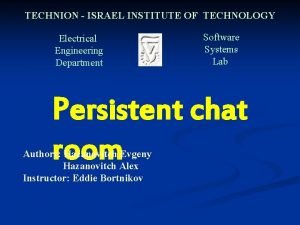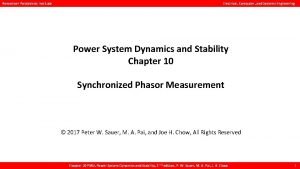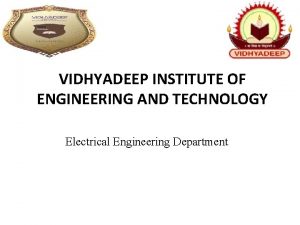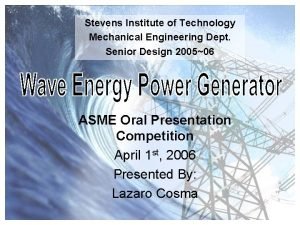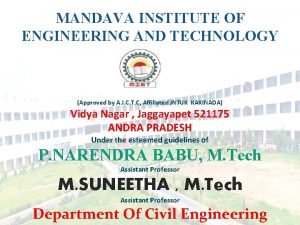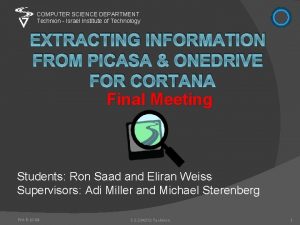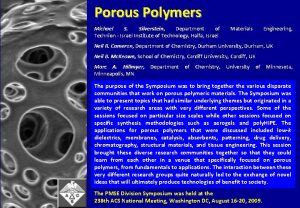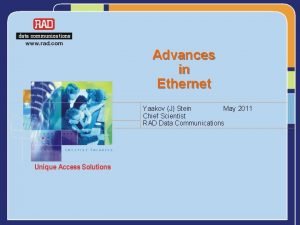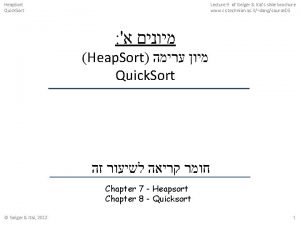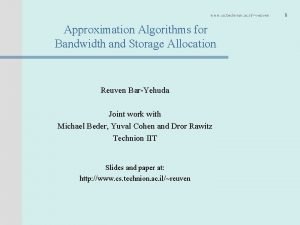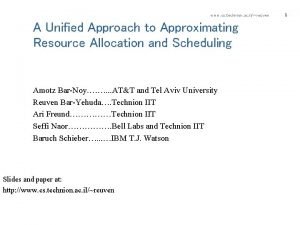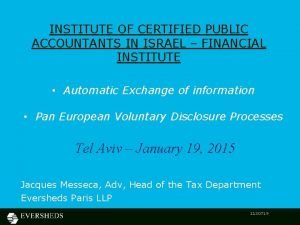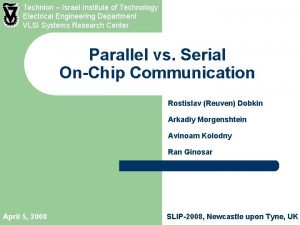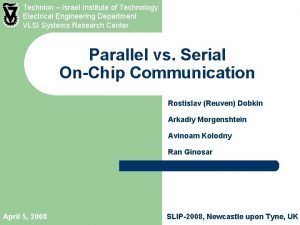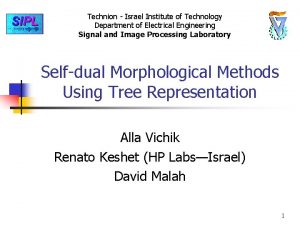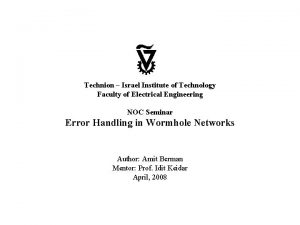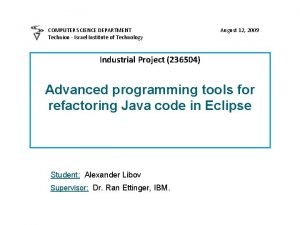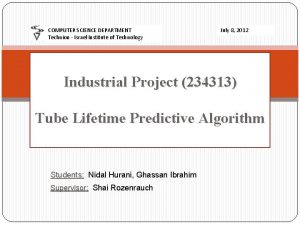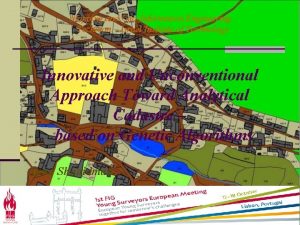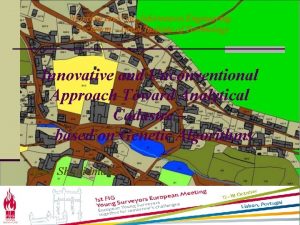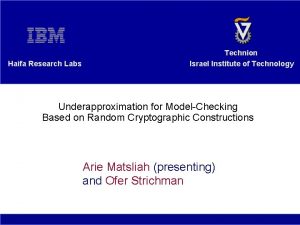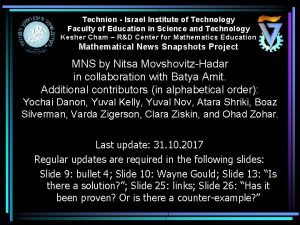TECHNION ISRAEL INSTITUTE OF TECHNOLOGY Electrical Engineering Department
















- Slides: 16

TECHNION - ISRAEL INSTITUTE OF TECHNOLOGY Electrical Engineering Department Software Systems Lab Multi-Threading LAME MP 3 Encoder Performed by : Gilad Riachshtian Copyright, 2004 © Gilad Raichshtain.

Talk Layout l l l What is the L. A. M. E. Project ? Project Goal MP 3 Encoding & Hyper-Threading Overview Multi-Threading strategies Results & Remarks Future Work

What is the L. A. M. E. Project? An Open Source project l An Educational Tool used for learning about MP 3 encoding l It’s goal is to improve l – Psycho-acoustics quality – The speed of MP 3 encoding l Lame is the most popular state of the art MP 3 encoder/decoder used by today’s leading products. FOR MORE INFO. . . http: //lame. sourceforge. netwww. lame. org/

Project Goal Speeding up the encryption of an audio stream l Turning LAME into a Multi-Threaded (MT) engine l Be 1: 1 bit compatible with the original version l Optimize specifically for SMT platforms (implementation on Intel’s P 4 with Hyper. Threading Technology) l

Thread Level Parallelism Provides thread level parallelism on each processor l Resulting in l – Increased use of processor execution resources – Higher processing throughput l Achieved by duplicating the architectural state on each processor, while sharing one set of processor execution resources

MP 3 Encoding Overview Break up the audio stream into frames (uniform chunks, typically ~1 K) Frame 1 Frame. Audio 2 Frame Stream 3 Frame 4 Read Frame Perceptual Psycho. Acoustic Model Analysis Filterbank MDCT Quantization Specifically in LAME Bitstream Huffman Encoding Encode

LAME MT – Intuitive approach The intuitive approach: Frame 1 Frame 2 Frame 3 Frame 4 Frame 5 Frame 6 Thread 1: Thread 2: An unbreakable dependence This is actually Data Decomposition due to Huffman Encoding

LAME MT – Functional Decomposition Frame 1 Frame 2 Frame 3 Frame 4 Frame 5 Frame 6 Floating Point Intensive T 1: Read Frame Psycho. Acoustic Analysis Filterbank MDCT Quantization T 2: Integer Intensive Huffman Encoding

Results

Results due to Multi-Threading SMT Platform CBR / VBR SMP Platform CBR / VBR Using Microsoft’s Compiler 22% / 32% 38% / 62% Using Intel’s Compiler 8. 1 20% / 29% 44% / 59%

Results using Intel’s Compiler 8. 1 SMT Platform CBR / VBR SMP Platform CBR / VBR LAME Original Code 3. 97 a 21% / 19% 22% / 17% LAME MT Code 19% / 17% 28% / 15%

Overall Performance Results SMT Platform CBR / VBR LAME MT code + Using Intel’s Compiler 8. 1 SMP Platform CBR / VBR 52% / 70% 78% / 109%

Remarks l Architectural Issues – Pitfall found in version 3. 93: • Memory access to two different pages with the same offset • ~11% speedup achieved by fixing it • No longer relevant in later versions – No major arch issues found in versions 3. 94 -3. 97 a l Implement a PNI version for FFT – No significant gain achieved l Overall ~40 blocks of code were change and are under #ifdef

Future work

Future Work Splitting the encoding process into more than two steps l Reading frames in parallel l

 Electrical engineering technion
Electrical engineering technion Rensselaer polytechnic institute electrical engineering
Rensselaer polytechnic institute electrical engineering Electrical engineering department
Electrical engineering department Tum department of electrical and computer engineering
Tum department of electrical and computer engineering Ucla electrical engineering department
Ucla electrical engineering department Vidhyadeep institute of engineering and technology
Vidhyadeep institute of engineering and technology Stevens institute of technology mechanical engineering
Stevens institute of technology mechanical engineering Mandava institute of engineering and technology
Mandava institute of engineering and technology Fromme423
Fromme423 Cs drive technion
Cs drive technion Technion aerospace
Technion aerospace Michael silverstein technion
Michael silverstein technion Ethertype 88f7
Ethertype 88f7 Technion
Technion Technion
Technion Technion
Technion Institute of certified public accountants in israel
Institute of certified public accountants in israel
